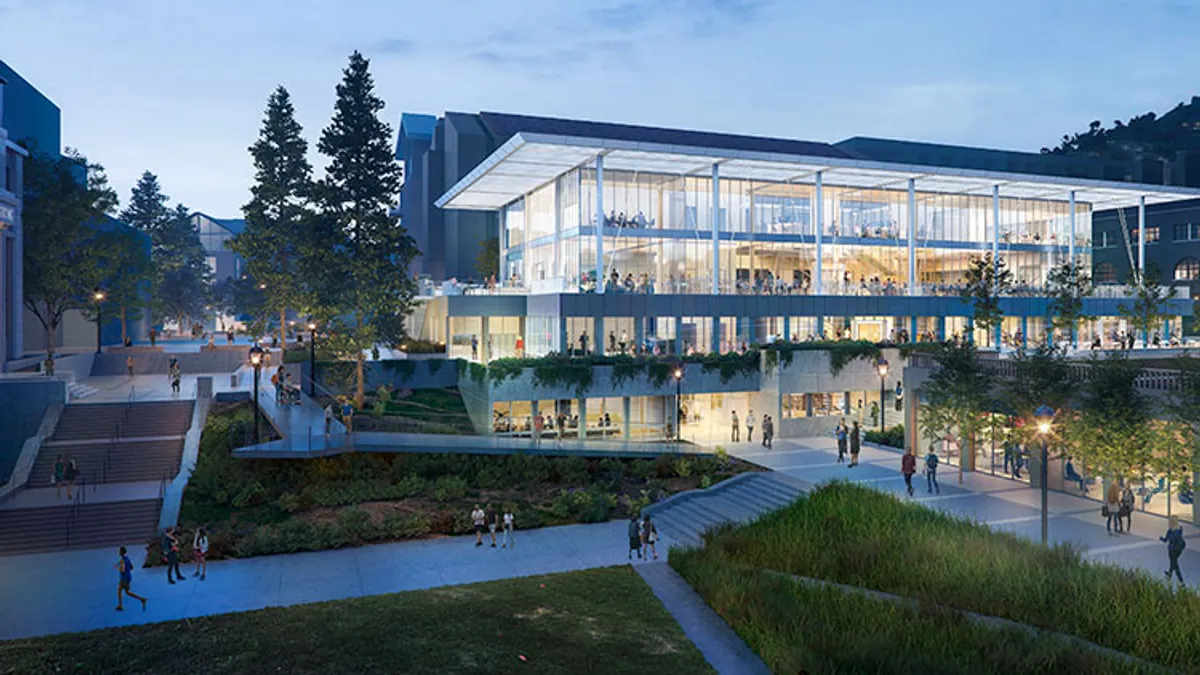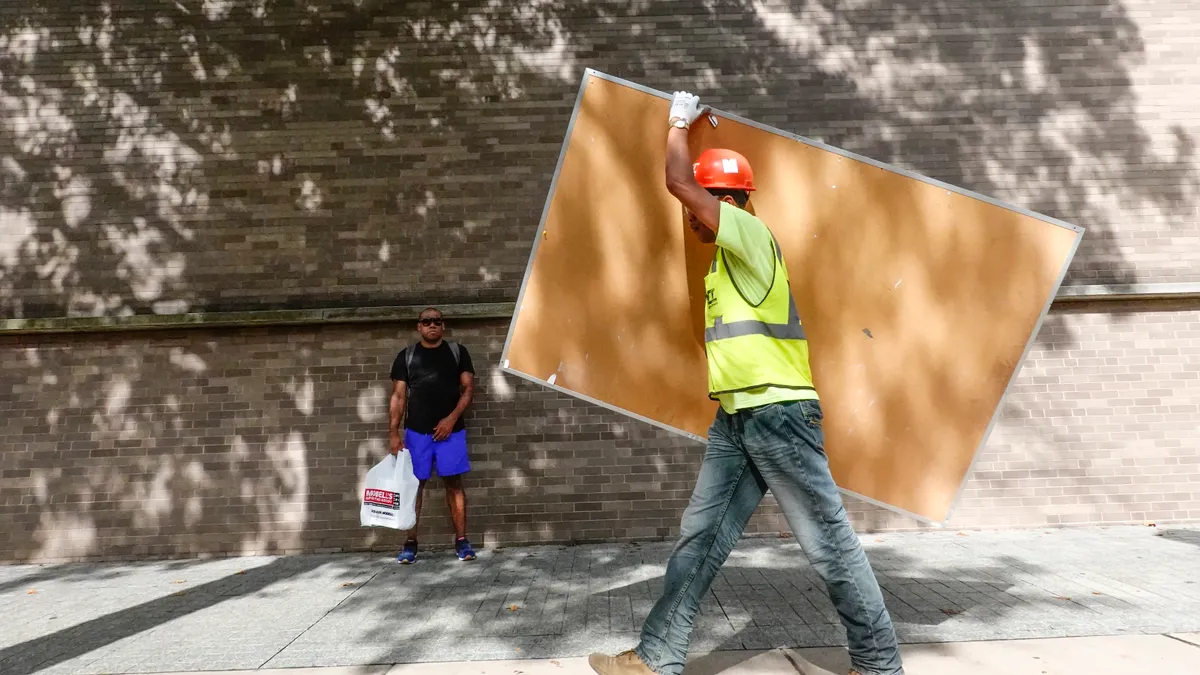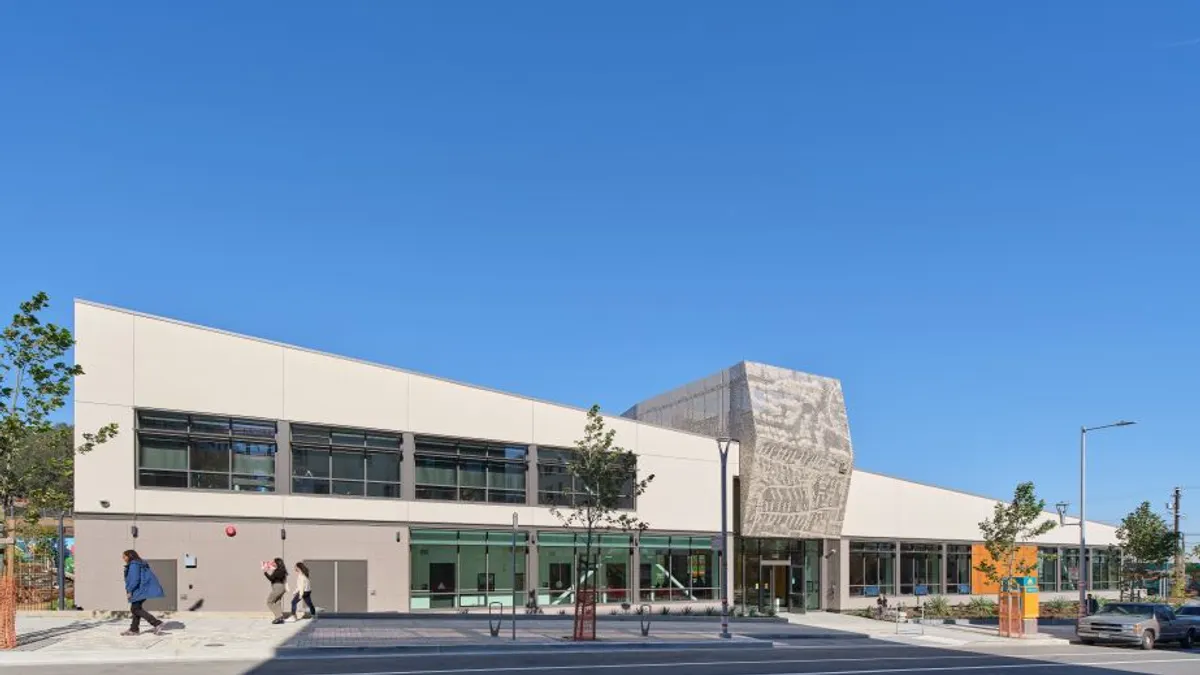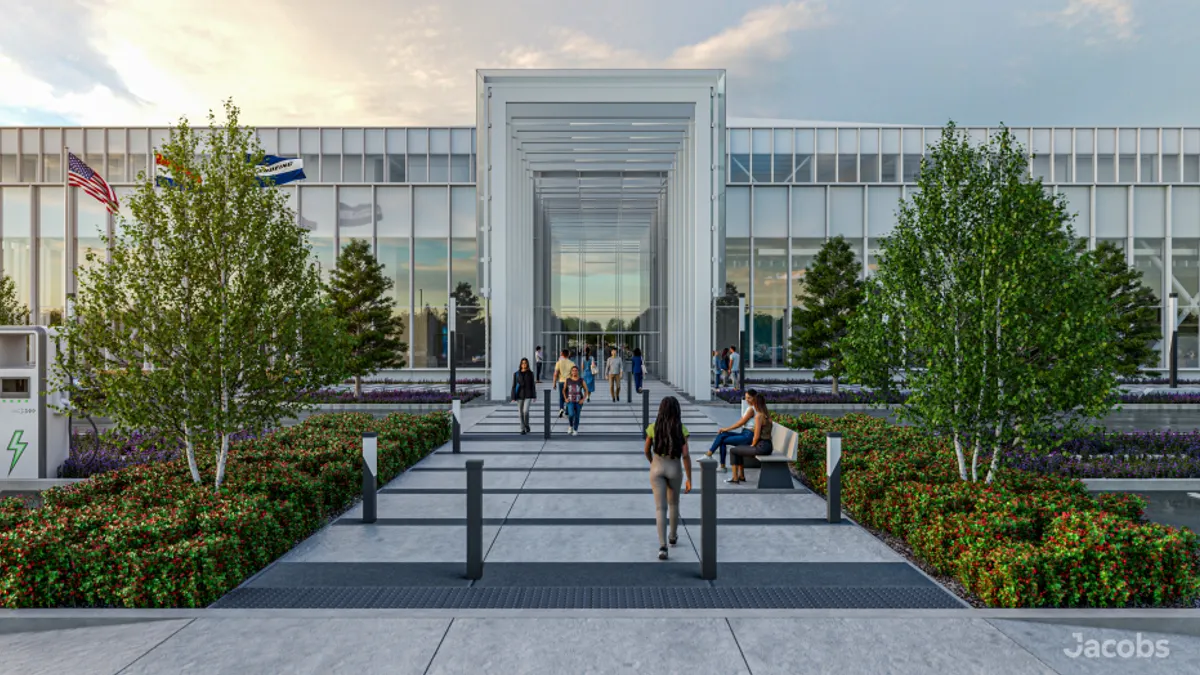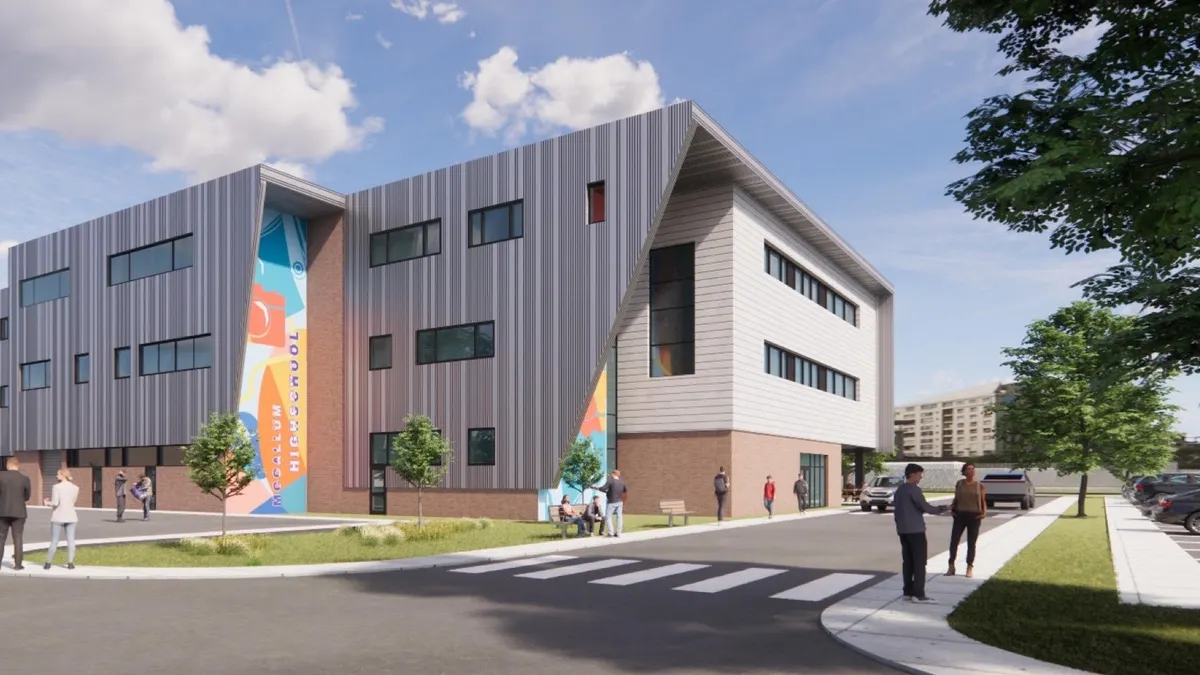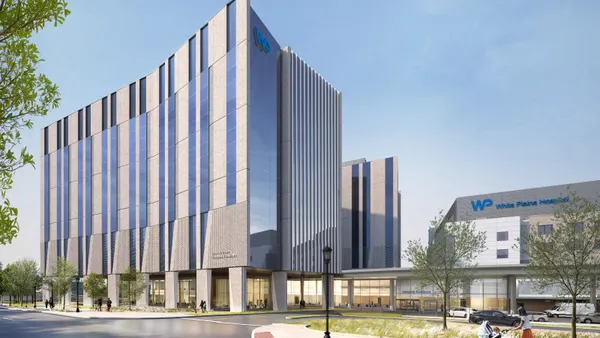The cold storage business is booming.
Whether it is COVID-19 vaccines or fresh and frozen foods on their way to restaurants, grocery stores or direct to consumers, there is a growing volume of items that need to be kept at a cool or freezing temperature.
Before the pandemic, demand for cold storage facilities, driven by consumer habits that have seen a shift from shopping in brick and mortar stores to ordering online for home delivery, was on the rise. The pandemic simply accelerated that trend.
And it’s not just new demand that is driving the cold storage construction market. A September 2020 report from real estate services and investment management firm JLL estimated that more than 78% of the cold storage building supply at that time was built before 2000. The outdated designs used in many of those facilities do not have the space necessary for modern logistics and racking and are not as energy efficient as their newer counterparts so customers are eyeing replacement facilities.
Among newer projects, the type of facility is changing somewhat. In addition to large regional facilities, owners and developers are building microfulfillment centers, said Matt Hirsch, president of Primus Builders. While these smaller structures further reduce the distance between the product and the end customer, they aren’t replacing regional ones.
“There still needs to be regional distribution centers to supply the microfulfillment centers,” he said.
Future projects could also include conversions of a portion of grocery stores into microfulfillment facilities, according to Hirsch.
“You have to be close to where people are in order to meet the demand,” he said.
Part of the latest demand is space for COVID-19 vaccine, which has different requirements depending on the manufacturer. The Moderna vaccine arrives frozen between -13 degrees and 5 degrees F and must be kept at that temperature range until the expiration date. Once thawed, it can be kept for 30 days at between 36 and 46 degrees.
The Pfizer-BioNTech vaccine, however, arrives frozen at a temperature range of between -112 and -76 degrees and, if it is to remain frozen, must be stored in a facility able to maintain that range or remain for a limited time in the special shipping container. Before mixing, the vaccine can be kept for up to five days at between 36 and 46 degrees. Once mixed, the vaccine must be used within six hours, all the while kept at temperatures between 35 and 77 degrees.
Pfizer announced Feb. 19 that it had submitted new data to the U.S. Food and Drug Administration showing that the vaccine could also be stored safely for up to two weeks at temperatures of between -13 degrees and 5 degrees. Pfizer has proposed this information be included in an update to its vaccine's prescribing information.
New developments
Contractors in the sector are finding that there is plenty of demand. According to a 2019 report from commercial real estate and investment services firm CBRE, the market can support 100 million square feet of new construction through 2024. To that end, there have been several new cold storage projects announced in recent months.
Construction started in January on what is being billed as Denver’s first speculative cold storage project, the 247,000-square-foot 76 Freeze. The multi-temperature, multi-user facility is owned by Karis Cold Storage and can store goods at temperatures between -10 degrees F and 55 degrees F.
The Houston area is experiencing a wave of speculative cold storage projects as well, according to Bisnow, including: a 304,000-square-foot facility being developed by Tippmann Innovation a 284,000-square-foot; a Scout Capital Partners conversion of an existing building into cold storage: and a 286,000-square-foot, ground-up Boomerang Interests facility. Some developers are anticipating a boom of cold storage projects supported by robust shipping activity in and out of Houston.
This month, CBRE also announced the development of a 700,000-square-foot, climate-controlled warehouse to service the sixth busiest cargo airport in the world, Ted Stevens Anchorage International Airport in Anchorage, Alaska. When complete, the building will include cold and warm storage space, quick cargo, general warehouse space, logistics services and auxiliary office space.
What to watch out for
Despite the many projects in development, cold storage contractors are facing a range of challenges getting projects to the finish line. They include:
Increased competition. A booming market draws new competitors, and the cold storage industry is no exception.
What is happening, said Joe Iatauro, senior vice president at JLL, is that contractors in other areas of construction like retail, hospitality and office buildings are starting cold storage divisions, but they also realize they need to bring on experienced team members — which are in short supply – or a consultant like JLL to bridge the experience gap.
“Because the space is so active and there is so much opportunity, we're seeing them get into the space and calling people like us to say, ‘Hey, this is not something that is in our wheelhouse,’” he said.
New competitors are using lower prices as an entry point, said Jeff Bischoff, executive vice president of business development with Gray. But that comes with being part of a growing market like cold storage.
“We feel very good about where we're at in relation to the markets that we serve,” he said. “We always strive to be the best at what we do, and our experience, our qualifications and our portfolio has carried us very well.”
Labor shortage. Finding skilled workers, subcontractors and managers who know the construction business can be daunting for any contractor in any specialty right now, but finding those who are well versed in the intricacies of cold storage can be even more difficult, Hirsch said. That hurdle stretches as far as those needed to operate the facilities once they’re built as well.
The cold storage segment has been trending toward the use of technology and automation, Iatauro said, complete with complex crane systems, and these advancements are tied into the construction process. This requires that most every trade contractor working on these projects must have cold storage-specific proficiencies, Hirsch said.
Adding to the challenge, Bischoff said, is that as new competitors have entered the market, subcontractor prices have gone up because they are in demand. Even so, Gray's subcontractors and staff have been able to keep up with the increase in projects.
“I don't think right now any of the folks that are in the [cold storage] space construction-wise would say, ‘Hey, we're concerned about bandwidth,’ but all of those contractors are looking for people right now,” Iatauro said
Shorter schedules. Since cold storage facilities are in high demand, Bischoff said, owners and developers are pushing faster turnaround times. “We are seeing construction design and construction schedules being compressed,” he said.
Owners are asking that, for example, contractors shave five months from a project that normally takes a year, Hirsch said. Some facilities that typically take 18 months are being accelerated toward a 12-month delivery. This requires double work shifts, offsite fabrication and “a lot of creative planning.”
“Those who are able to [build] the fastest are able to get the maximum benefit right now,” he said.
Delivery delays. The equipment and material supply chain, Hirsch said, has been impacted, first by COVID-19 and then by the surge in construction, resulting in longer lead times for most orders. In fact, Amazon, a big developer of its own fulfillment and distribution centers, has placed orders for approximately half of the expected domestic fabricated steel supply for the next two years.
Equipment delivery is taking longer as well. Once Gray starts a project, Bischoff said, it has equipment coming in from all over the world. While suppliers are taking up to twice the normal delivery time for some items, most products are still available and supply chains haven’t been cut off.
Despite new challenges, the situation that most cold storage construction companies find themselves in is a good one. Success, Hirsch said, is about selecting the right opportunities and making sure the contractor can execute at a high level.
“Just being able to pace yourself is super important in this industry,” he said. “You’re only as good as your last job.”







